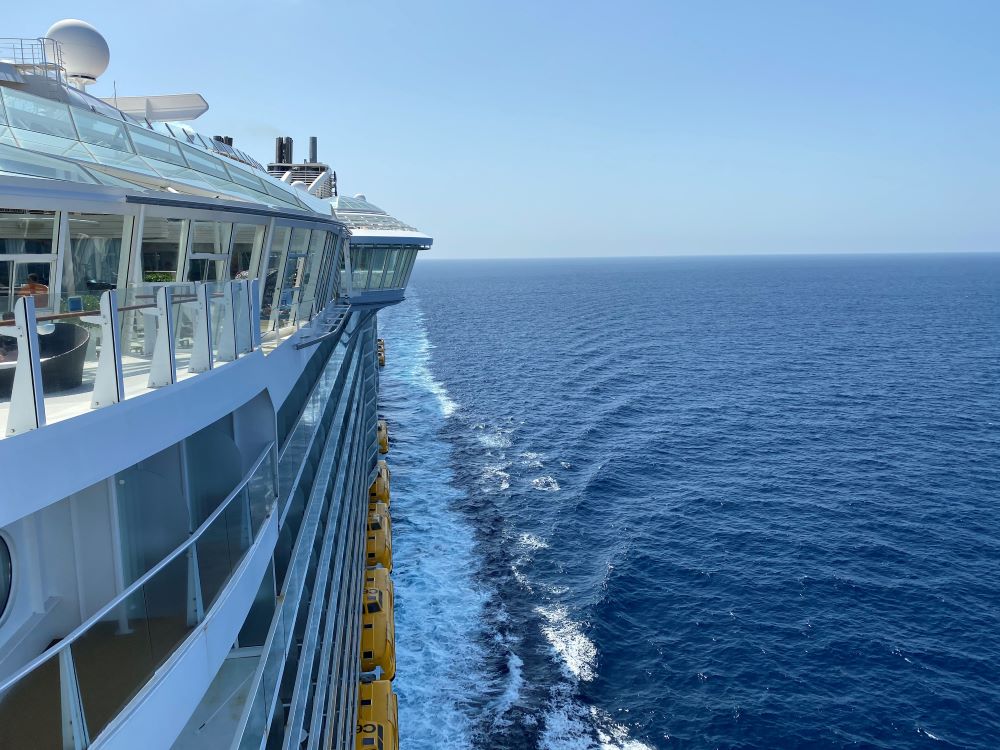While cruise lines have had a year to forget, there are more signs than ever that the popularity of cruising is going nowhere.
Case in point: Royal Caribbean announced during an investor call today that its Ultimate World Cruise — a 274-night journey announced just days ago — is already 70% booked.
This cruise made headlines as a sailing crossing the entire globe, calling on more than 150 destinations and 65 countries over the course of nine months. And as we told you, the starting price for an interior room was a staggering $61,000 per person.
Even so, people show they are ready to set sail again. The cruise, which was at first open to booking only for Diamond-level and above Crown & Anchor members (Royal Caribbean’s loyalty program), has sold quickly despite not leaving until late 2023.
“Within seven days, we were 70% booked,” said Royal Caribbean International CEO Michael Bayley. “And the average price of a balcony room is $75,000. The Royal Suite sold within a week at $760,000. And all of these suites are booked with non-refundable deposits. Even we were taken aback by the unbelievable response of our loyalty customers.”
It’s a definite sign that the future of cruising is bright, however, Royal Caribbean continues on a measured path in its return.
More Than One Million Passengers Expected By End of Year
In addition to the update on Ultimate World Cruise bookings, the cruise company — parent of Royal Caribbean International, Celebrity, and Silversea Cruises — also shared that it has carried more than 500,000 passengers since it restarted operations. It plans to carry more than one million by the end of 2021.
That figure shows just how deliberate the company is being in its return as it makes the comeback from the health crisis. For comparison, Royal Caribbean Group carried more than 6.5 million passengers in 2019, before the pause in sailing.
As of today, the company says that 40 ships, making up 65% of capacity, have returned to service. However, these ships are sailing at a sharply reduced capacity. Within Royal Caribbean’s “core” Caribbean, Alaska, and Europe itineraries, it had a load factor of just 44% in the third quarter.
According to the company’s press release, it is “thoughtfully returning ships into operations at reduced load factors and slowly building to ensure health and safety, a world class guest experience, and financial prudence.”
“We want to show, in a tangible way, the safety and simplicity of cruising,” said Richard Fain, CEO of Royal Caribbean Group.
Optimistic About the Future
Overall, company executives sounded optimistic about the future as ships return and Delta cases fall in the United States.
Going forward, Royal anticipates to bump its load factor to 65-70% in its core itineraries during the fourth quarter 2021 and have 80% of worldwide capacity back sailing by the end of the year.
The company also said that bookings have “improved significantly” since a slowdown due to the Delta variant. Currently 2022 sailings are within “historical ranges” and at higher prices compared to 2019. Even so, Royal Caribbean says that trips further out on the calendar are experiencing more normal booking measures compared to sailings departing sooner.
One other bright spot for the cruise giant? It said in the last quarter that its revenue per passenger cruise day was up a strong 12%, mainly due to higher onboard spending.














